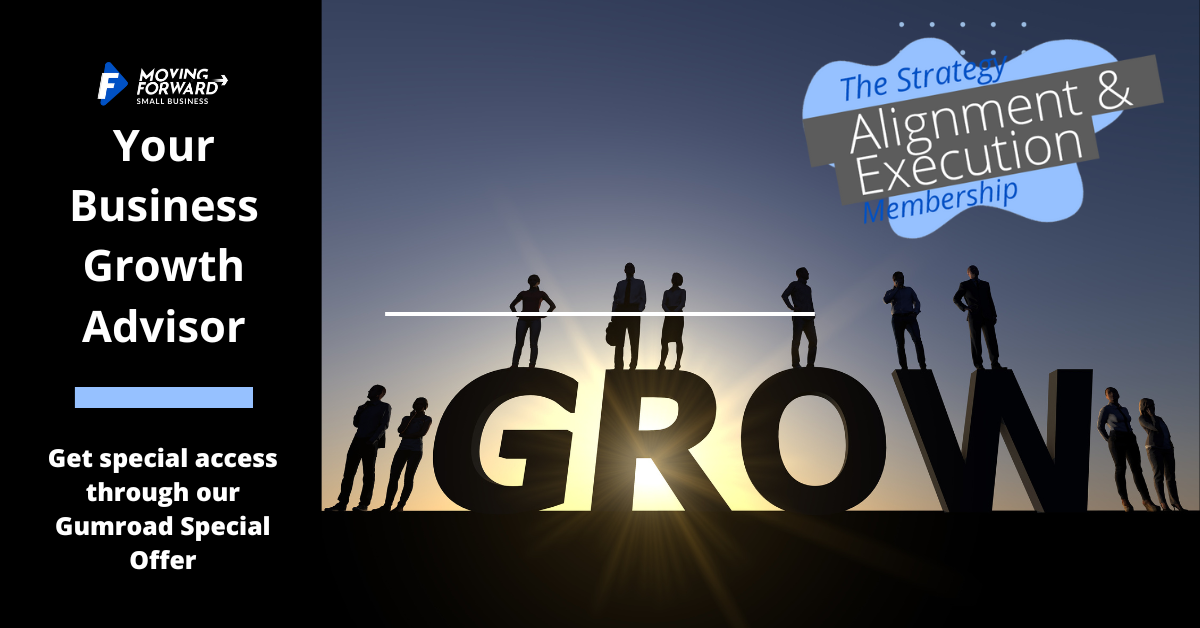Key Highlights
- Learn ways to boost sales for small businesses to make more money.
- Look into tactics like using social media and implementing CRM to keep customers.
- Understand how SEO, email marketing, and referral programs can help your business grow.
- Find out how great customer service and smart partnerships can help you stand out.
- Discover tips on creating your unique value and building a strong brand identity for long-term success.
Introduction to Sales Growth Strategies
In today’s tough market, getting sales success needs a good online marketing plan. You also have to focus on a great customer experience. This article offers a detailed guide for small businesses on effective ways to grow sales. By using these tips, you can improve your brand’s visibility, bring in new customers, and support long-term growth.
Top Sales Growth Strategies for Small Businesses Unveiled
For small businesses to succeed today, having strong sales growth strategies is a must. There are many options out there, so finding the best strategies can be hard.
That’s why we are here. In this article, we will go over proven sales growth strategies for small businesses. We’ll show you how to use social media effectively and how to set up good CRM tools. This way, you will have the knowledge and tools to move your business forward.
1. Leveraging Social Media for Enhanced Visibility and Engagement
Social media has changed a lot. It started as a place to connect with friends. Now, it is an important tool for online marketing. This is a great chance for small businesses to get more attention for their brand and reach more people.
To do effective social media marketing, you need to make interesting content. You should also interact with your followers and run ads for specific groups. It is important to find out where your audience spends their time and create content for those platforms.
By regularly sharing useful content and having real conversations, you can turn your followers into loyal customers. This will help you get the most out of your digital marketing efforts.
2. Implementing Customer Relationship Management (CRM) Tools for Better Client Retention
To keep customers happy, businesses can use customer relationship management (CRM) tools. These tools help with communication, watching what customers do, and personalizing messages. By knowing what customers like and what they have bought before, businesses can better connect. This leads to more satisfied customers who stay loyal. Using CRM tools helps build good relationships with customers. It also helps increase sales through better marketing plans. This smart way of working improves customer experience, which can lead to sales success and a growing business.
3. Utilizing Email Marketing to Nurture Leads and Drive Conversions
Building a strong email list is a great way to reach your audience and grow your leads. Email marketing helps businesses to:
- Share valuable content: Send helpful articles, special offers, and updates right to their inboxes.
- Build brand loyalty: Strengthen relationships by offering personalized content and deals that match their interests.
- Drive conversions: Help subscribers make a purchase with clear calls-to-action and focused email campaigns.
By organizing your email list based on subscriber data and how they engage, you can improve conversion rates by sending them relevant and timely emails.
4. Enhancing Website SEO for Greater Online Presence and Traffic
In online marketing, just having a nice website is not enough. You must also optimize your site for search engines, known as SEO. This helps you reach more people online and get more visitors.
SEO means improving your website’s content, layout, and technical parts. This helps your site rank better in search results. By focusing on the right keywords, writing good content, and getting backlinks, you make it easier for customers to find you online.
More visitors mean better leads, increased trust in your brand, and a larger rise in sales.
5. Offering Exceptional Customer Service to Encourage Repeat Business
In the hunt for new clients, many businesses forget how important it is to give great customer service to their current ones. It is often cheaper to keep an existing customer than to find a new one.
Knowing what your ideal customers need and what they struggle with is key to giving them experiences that build loyalty. This involves exceeding their expectations, quickly solving any problems, and always offering personalized help.
Happy customers are more likely to buy again, tell others about your business, and act as brand ambassadors. They help with long-term growth.
6. Developing a Referral Program to Leverage Word-of-Mouth Marketing
Integrating a good referral program into your marketing plan is a great way for small businesses. It helps them back the power of word-of-mouth marketing. Referrals work like strong testimonials because people trust suggestions from friends and family more than regular ads.
First, find your loyal customers. Offer them good incentives for each successful referral. Know your ideal customer profile to design effective referral campaigns. This way, you can connect with their network and encourage more people to join in.
When you reward both the referrer and the new customer, it creates a win-win situation. This helps build brand loyalty and grows your customer base.
7. Hosting Events or Webinars to Educate and Engage Potential Customers
Hosting events or webinars is a great way to show your brand as an expert. It helps you reach more people and show what your products or services can do. The impact of these events is not just about getting leads. They let you teach potential customers, answer their questions, and build trust.
Webinars are especially good for digital marketing because they help you connect with a global audience. If you pick topics that your target market cares about and share useful insights, you can become a leader in your field. This will help you generate leads and guide them through the sales process.
Also, you can record these events and use them again as content for your website and social media. This will make their impact and reach even greater.
8. Exploring Partnership Opportunities for Cross-Promotion
In the competitive world of e-commerce sales, partnerships can really help. Cross-promotion lets businesses reach each other’s customers. This can boost both reach and sales.
Look for businesses that have a similar audience but sell different products or services. For example, a fitness clothing company could work with a local gym. Partnerships can come in many ways, like social media collaborations, joint ventures, or affiliate marketing.
By using the strengths of both brands, cross-promotion can increase brand awareness. This will help you reach new markets and raise your revenue in the end.
9. Investing in Pay-Per-Click (PPC) Advertising for Immediate Visibility
Investing in pay-per-click (PPC) advertising can help small businesses be seen online right away. With PPC campaigns, these businesses can focus on certain groups of people. This is done by looking at things like age, interests, and online habits. This focus can help to improve conversion rates and boost sales success. PPC also allows businesses to change their marketing plans quickly. They can do this by looking at real-time data. This means they can optimize their ads and get better returns on their investment.
10. Optimizing Your Sales Funnel for Higher Conversion Rates
Attracting new customers is only the first step. It is also important to guide them easily through the sales funnel. Sales funnel optimization is a special process. It helps you look at each part of the customer journey. You want to find any problems that stop people from buying.
Start by outlining your sales funnel. This should go from when people first learn about you to when they make a purchase. Look for ways to improve it. This might mean making your website easier to navigate, improving your checkout process, or adding clearer calls to action.
If you fix these problems and make everything user-friendly, you can greatly boost your conversion rates. This will help make your marketing efforts more effective.
11. Analyzing Data and Metrics to Inform Strategy Adjustments
In the dynamic world of marketing, a one-size-fits-all approach rarely yields sustainable results. Regularly analyzing data and metrics is essential for gaining insights into what’s working and making data-driven adjustments to your marketing plan.
Most digital marketing platforms offer built-in analytics dashboards; utilize these to track key metrics such as website traffic, social media engagement, email open rates, and conversion rates. Analyzing these metrics lets you:
- Identify trends: Understand customer behavior, identify popular products, and pinpoint potential areas for improvement.
- Measure ROI: Evaluate the effectiveness of your marketing campaigns and optimize spending for maximum impact.
- Make informed decisions: Use data insights to adjust your marketing plan, refine your target audience, and adapt to changing market trends.
| Metric | Description | Importance |
| Website Traffic | Number of visitors to your website | Measures brand visibility and reach |
| Conversion Rate | Percentage of visitors who complete a desired action | Indicates the effectiveness of your sales funnel |
| Customer Lifetime Value | Total revenue generated from a single customer over their lifespan | Highlights the importance of customer retention |
Crafting Your Unique Value Proposition
In a busy marketplace, just providing a good product or service isn’t enough. You need to define and communicate what makes you special. This is important to stand out from others and attract the right customers.
Your unique value proposition shows what sets your business apart. It describes the problem you solve, how you approach it differently, and what benefits customers get from choosing you. It should be clear, engaging, and focused on the needs and goals of your target audience.
Identifying What Sets Your Business Apart
Identifying what makes your business unique is very important for good branding and standing out in the market. This requires understanding your target customers, your competitors, and what your business does well and not so well.
Start by asking yourself: What values guide your business? What specific problems do you solve better than anyone else? Once you find these key points that set you apart, express them simply and clearly. This will help you create a unique selling proposition that speaks to your customers.
Keep in mind, your unique value proposition is more than just a slogan. It’s a promise that should be part of everything you do. It should show in your products or services, your customer service, and the entire experience that your brand offers.
Communicating Your Value Clearly to Your Target Market
Once you have defined your unique value, the next important step is to share it well with your ideal customers. This means creating a simple and strong sales message that matches what your customers need and want.
Do not use complicated words or technical terms that could confuse them. Instead, talk about how choosing your product or service will help them. Use words that focus on the customer, show the benefits, and include testimonials or case studies to support your claims.
Keep in mind, that your sales message should not just tell your ideal customers about what you offer. It should also create an emotional connection that builds trust and shows you are credible.
Building a Strong Brand Identity
Building a strong brand identity is not just about having a logo or a color scheme. It is about creating a lasting experience that connects with your audience.
Your brand identity should include your values, mission, and unique personality. You need to show this in all parts of your business. This means your website, social media, customer service, and even your packaging should all reflect your brand.
The Importance of Consistent Branding Across All Channels
Maintaining a consistent brand across all platforms is very important for creating a strong and memorable customer experience. When customers see the same brand, both online and offline, it helps build trust, familiarity, and professionalism.
If branding is not consistent, it can cause confusion. This makes your brand message weaker and harms your credibility. You need to keep your brand logo, colors, font, tone and images the same on your website, social media, marketing materials, and any physical store you have.
Good branding helps people recognize your brand, strengthens its identity, and helps you build a loyal customer base.
Strategies for Creating a Memorable Brand Experience
Creating a memorable brand experience means knowing your customer’s journey well. You should find ways to go beyond what they expect. It’s important to make good and lasting impressions. This makes customers feel valued and appreciated.
Personalization is very important. You should adjust how you interact based on each customer’s likes, past purchases, and how they engage. Small actions, like writing thank-you notes, sending birthday wishes, or giving special offers, can help build a strong emotion between you and your customers.
By paying attention to details, asking for customer feedback, and working hard to give great service, you can create a brand experience that not just meets but exceeds what customers expect. This will help build strong loyalty from them.
Conclusion
In conclusion, using these best sales growth strategies can take your small business to greater success. By using social media, improving customer relationships, and boosting your online presence, you can attract and keep customers easily. Remember, taking care of leads, offering great service, and looking at data are important parts of a good sales plan. Creating a unique value statement and building a strong brand will help you stand out from others. Keep being active, adjust to market changes, and keep improving your method for steady growth. Sign up now for our Strategy Alignment and Execution membership to begin your journey to more sales and business growth.
Frequently Asked Questions
How Can Small Businesses Compete with Larger Companies in Sales?
Small businesses can stand out by using niche marketing. They should give personalized customer service that suits their ideal customer. It’s also important to build strong relationships in their communities. This helps them create a clear and strong place in their business strategy.
What Are the Most Cost-Effective Sales Strategies for Small Businesses?
Use cost-effective methods like social media marketing and email marketing. Also, try using a CRM system. This can help you get a better return on investment and build better relationships with your customers.
How Often Should Sales Strategies Be Reviewed and Adjusted?
Regularly check and change your sales strategy. Do this based on market trends and customer behavior. Use data analysis to help. It is important to be flexible and make changes as needed. This will help your business stay strong.
Can Digital Marketing Replace Traditional Sales Methods for Small Businesses?
Digital marketing is important for e-commerce and being online. However, traditional sales methods still matter. Using both digital and traditional methods together can create a better overall plan.


